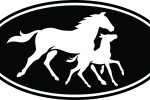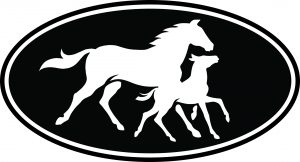As Chairman of Ascot racecourse, Her Majesty’s representative at Ascot and Chairman of Weatherbys, your time must be at a premium. How do you manage it?
With a great team of people, at Ascot and Weatherbys. I am based mainly at Weatherbys but maintain regular contact with Charles Barnett at Ascot and, of course, during the immediate run-up to the royal meeting pretty much all of my time is devoted to Ascot.
Can you outline your role as Her Majesty’s representative at Ascot?
This year is my first royal meeting as Her Majesty’s representative and I shall be effectively overseeing the management of Ascot on behalf of the Queen. When the Queen or any member of the royal family is at Ascot, it is my job to meet them on arrival and look after them throughout the day.
The Queen takes an active interest in everything that goes on and I need to keep her fully briefed. She loves racing, loves Ascot and loves her horses. The five days of the royal meeting are five days of enjoyment for her.
Does the Queen have input into the way Ascot is run?
Ascot racecourse is leased from the Crown Estate. Ultimate responsibility rests with the three trustees, Mark Davies, Francis Brooke and myself. We are appointed by the Queen and our responsibilities are set out in an Act of Parliament, the Ascot Authority Act of 1913.
The day-to-day management of the business is the responsibility of Ascot Authority (Holdings) Ltd. This board consists of the executive directors, headed up by our Chief Executive Charles Barnett, the three trustees and a further non-executive director.
One of my responsibilities is to keep the Queen informed both of what is happening at Ascot and also our future plans. And she will always give an opinion on matters.
Can you see the day when Royal Ascot races will carry sponsorship?
If we were to go down this route it would be as an extension of our existing partner programme. We have had corporate partners since 2006 [currently Betfair and Longines] but nothing to do with the royal meeting. I am sure there would be a lot of commercial interest but conventional race sponsorship is not on the cards.
How do you see the future of the royal meeting and in which ways can improvements be made?
We have to ensure the best horses, both from here and overseas, continue to come, and that the customer experience is as good as possible. To achieve the first objective, we need our prize-money to be competitive internationally. We have increased it by £715,000 this year to £4.5 million, but we need to do more.
As far as our customers are concerned, we have various new initiatives this year including premium facilities for both Grandstand and Silver Ring clients, and we have reduced the capacity in the grandstand on the busy days.
Have you got back some of those customers who vowed never to return after Ascot’s redevelopment?
Absolutely. We accept that there were problems when we reopened, but lots of those who didn’t come back in 2007 have since returned.
“I’m sure there would be plenty of interest in conventional race sponsorship but it’s not on the cards”
Following the orange stickers disaster, Ascot has come down firmly with a dress code. Do manners decline when the dress code is allowed to lapse?
It is not so much about manners declining as ensuring that we hold true to what the majority of those attending want. It is clear that for most people Royal Ascot is a special occasion where they want to dress smartly and be amongst others who have also made the effort.
Dressing up is an important part of what makes Royal Ascot unique. There is also a dress code for the other Ascot meetings, as there is at many other racecourses here and abroad.
What would you say to people who think Ascot’s view on attire is elitist?
We want to see modern and stylish dress at Royal Ascot, just within the parameters of formal wear. We have worked with the fashion world to define better what formal dress means. Again it is down to what our customers want. If they don’t like it they won’t come. I think it says something that Royal Enclosure badge sales are running at 20% ahead of last year.
Since improvements were made to the new grandstand’s viewing facilities, what has been the response?
There were some design issues with the rebuild but these were remedied in 2007. The feedback since has certainly been positive, but there is always room for improvement and we want to do more for various customer groups, including owners and trainers. We would like to have an owners’ and trainers’ bar overlooking and adjoining the parade ring, and also to improve their viewing facilities.
You must have been thrilled with the success of the inaugural British Champions’ Day…
We were absolutely delighted. It was a special day, with the standard of racing unprecedented for a new event. There aren’t any fundamental changes this year, but we obviously want to get the Fillies and Mares, Stayers and Sprint races upgraded as soon as possible.
The British Champions’ Series team is currently open-minded as to the future date, but the focus now is on making October 20 a success.
The BBC and Ascot have been inextricably linked. Will Ascot be the same without the ‘Beeb’?
This was clearly an important decision, not only for Ascot but for racing as a whole. In Channel 4 [who take over coverage in 2013] we have a partner hugely committed to Ascot, to the success of the royal meeting and to the sport. This is a big investment on their part and we have every confidence that the Channel 4 team will deliver a top class product.
Will there be any way in which the type and quality of advertising on Channel 4 can be influenced by Ascot?
Yes and we have already sought assurances in that respect. The type and quality of advertising is obviously very important to us.
You are the seventh generation of your family to work for Weatherbys. When did you first become involved in the company?
I joined Weatherbys in 1978 aged 18 and was immediately despatched to a firm of chartered accountants in the City. I was there for nine months, understood little and learnt nothing. When I went back to Weatherbys, I started as a trainee clerk in the racing department.
What are your first memories of the sport?
My father worked in the City for most of his life so Weatherbys were not a major feature when we were growing up. My mother rode plenty of winners in point-to-points, Dad rode the odd one and they had a few broodmares. I was much keener on football than racing and was, and still am, a Manchester United fan. It wasn’t until I joined Weatherbys that I started to get interested in racing.
I rode for about 15 years in point-to-points and hunter chases but was pretty moderate. I had a good horse called Sanballat with David Nicholson which won a few times and got me round Cheltenham. At least I learnt how to deal with a bollocking!
Weatherbys, for so long the secretariat to racing, is now involved in banking, insurance, sponsorship, printing and other activities. How natural an extension were all these?
Looking back they do seem a natural extension, but I can’t pretend there was any grand strategic plan. We just did what felt right. In the early 1980s as with many firms, customer service was way down the pecking order. Everything my brother Roger and I have done since has the customer as the key driver, and this has been the foundation for the growth of Weatherbys Bank.
As a family company we can take a longer term view and are not beholden to the bottom line. Nothing too sophisticated – just common sense and our customers like it.
To what extent are you involved in racehorse ownership and breeding?
I have had bits and pieces of horses, Flat and National Hunt, for over 20 years. I had a share in the Henry Daly-trained Behrajan who was a serious horse. I currently have a couple of point-to-pointers, a share in a Henry Ponsonby syndicate with Tim Easterby, and half of two homebreds with Ed Dunlop, including Dragonera, who has just won her fourth race.
I have three mares, one Flat, one National Hunt and one ‘floater’, at home in Leicestershire.
Do you and your family still hunt with the Cottesmore?
I go out occasionally with my 11-year-old daughter Lara.
Can you name one change you believe would benefit our industry?
James Nesbitt said recently that racing is too hard on itself. How right he is. Whilst the finances may not stack up, we have so much to shout about. Top class horses, trainers and jockeys, loyal, resilient and enthusiastic owners, a huge variety of tracks, Flat and National Hunt racing, terrestrial TV plus two dedicated racing channels, a significant spectator base and a real love for the horse. How many other countries can compare with that?



